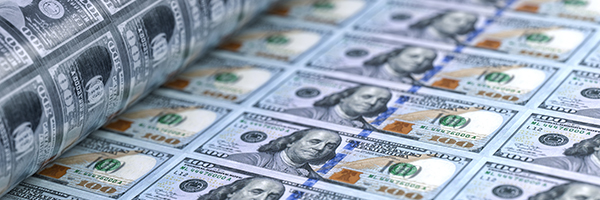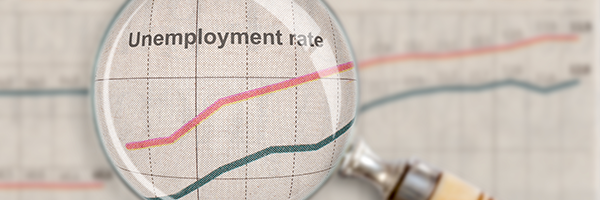
June 7, 2021 | Daily JAM, Volatility |
The CBOE S&P Volatility Index (VIX) dropped 8.9% on Friday, June 4, to 16.44. It’ up just slightly today to 16.73 (up 1.89%) as of 2 p.m. New York time. That’s, in my opinion, an extremely low reading on the fear index considering how many potentially market moving volatility events we’ve got ahead of us over the next six months. (For a list see my Special Report: 5 picks and 5 hedges for a falling market.) So today, June 7, I’m adding another Call Option on the ViX to my Volatility Portfolio.

May 31, 2021 | Daily JAM, Mid Term, Morning Briefing, Special Reports |
Today’s installment includes one hedge (on the ViX) and one stock pick (Lam Research.) Now if you’ve been following along with the logic that I’ve laid out in this Special Report, you know that stocks face months of potential volatility around the Fed’s June 16 meeting (What will the Fed say about ending its $120 billion in monthly bond purchases?), the August global central bankers confab in Jackson Hole (Will the Fed use the occasion, as it has done in the past, to indicate a coming change in interest rate policy?), the Fed’s September 22 meeting (Will the Fed be content to say nothing with the next “important” meeting not until December?) and then the central bank’s December 15 meeting.) That’s a large number of occasions that could set the stock market to worrying again. And then, of course, there’s OPEC and the price of oil, the battle over the recently announced Biden budget, the continued logjam on infrastructure spending, and fact that the pandemic is still running at full speed in countries such as India (and who knows what the return of cold weather and forced winter “togetherness” will do to infection rates in the developed economies of the northern hemisphere.) At 16.74 on the VIX, you don’t need a panic to produce a profit on higher volatility. The VIX was at 22.18 on May 19. And then there are the even higher VIX levels of 27.59 on May 12, 28.57 on Marcy 4, and 28.89 on February 25.

May 30, 2021 | Daily JAM |
You can lead a horse to water but you can’t make it him drink. You can flood the financial system with money but you can’t make banks lend or companies invest. That’s a classic potential problem for the Federal Reserve whenever it tries to use cheap money to stimulate economic growth. And it looks to be rearing its head now–which could create problems for the economy–and its growth rate–once the post-vaccine recovery has started to cool.
May 19, 2021 | Daily JAM |
The Wall Street adage “Sell in May and go away” looks to be spot on this year. At the close yesterday on May 18, the Invesco QQQ Trust ETF (QQQ), which tracks the NASDAQ 100, was still p 2.83% for 2021, but down 2.96% for the last three months and off 5.79% for the last month. But the full saying in its original form runs “Sell in May and go away; Don’t come back until St. Leger’s Day.” St. Leger’s Day marked the running of the third race in the British Triple Crown, which took place in September. The advice was to sell ahead of the quiet summer London social season. The adage as I learned it (not in England between the wars, mind you, since I’m not either that old or that patrician) advised to “Buy on NEA,” the big technology and venture capital conference usually held in November. That seasonal timing strategy let investors reap the gains from, historically, the six best months of the yer (November through April) and avoid the sluggish performance of May through October. From 1950 through 2019 the November through April period of each year saw the Standard & Poor’s 500 gain 2283.7 points, according to calculations by Jeffrey Hirsch in the Stock Trader’s Almanach. That’s against gains of just 610.79 points in the worst six months during that period. But this year? When should an investor or trader who has sold in May think about coming back?

May 12, 2021 | Daily JAM |
Today, May 13, investors and traders sold everything on the surprisingly strong April inflation report. This kind of sell everything reaction is typical of this first stage in a big market shift in sentiment. The question now is How long does this stage last? And When does the buying of winners in this new scenario kick in (along with continued but less violent selling of the losers?)

May 12, 2021 | Daily JAM, Morning Briefing |
Consumer prices, as measured by the Consumer Price Index (CPI) soared in April. For the month prices in the all-item index gained 0.8% for a 12-month increase of 4.2%. The core CPI, which excludes volatile prices in the food and energy sectors, was up 0.9% in April and is now up 3.0% over the last 12 months. But what’s it all mean?

May 10, 2021 | Daily JAM, Morning Briefing |
Today’s drop in stocks–a drop of 1.04% for the Standard & Poor’s 500 and a loss of 2.55% for the NASDAQ Composite at the close on May 10–is a reminder that runaway economic growth is only one horn of the financial market’s fears about the Federal Reserve and higher interest rates.

May 9, 2021 | Daily JAM |
This week Wall Street analysts and economists, professional money managers, and individual investors and traders will “re-calculate” their expectations about the economy for the remainder of 2021. Friday’s surprisingly small addition of 266,000 jobs to the U.S. economy–instead of the 1 million projected by economists–will lead to a revisions in assumptions about inflation, interest rates, and economic growth for the rest of 2021.

May 5, 2021 | Daily JAM, Morning Briefing |
U.S. private employers in April added the most jobs in seven months, according to data from the ADP Research Institute released today. Company payrolls rose by 743,000 in the month. That’s a big gain from the upwardly revised 565,000 gain in March. And it’s the biggest money gain in jobs in seven months. That increases worries that Friday’s April jobs report from the Commerce Department will show a gain for the month of nearly 1 million new jobs. Good news for workers, of course, but that would increase fears in the financial markets that we’re seeing the kind of sustained, multi-month gains in jobs that the Federal Reserve has said it needs to see before it begins to raise interest rates.

May 2, 2021 | Daily JAM, Morning Briefing, Short Term |
The U.S. economy is likely to have added 978,000 jobs in April, the Bureau of Economic Analysis will report on Friday May 5, according to economists surveyed by Bloomberg. That would be up from March’s gain of 916,000 jobs and would be the biggest increase since August 2020. It would probably send the unemployment rate down to 5.7% in April from 6% in March. The report will also put added pressure on the Federal Reserve to begin to reduce its program of buying $120 billion a month in Treasuries and mortgage-backed securities to support the economy. An initial reduction in the size of that program would be seen by the financial markets as a sign that the central bank is beginning to think about raising interest rates.

April 15, 2021 | Daily JAM, Morning Briefing |
Initial claims for unemployment in regular state-run unemployment programs fell to 576,000 last week. Economists had projected 710,000 new claims for the week.

April 13, 2021 | Daily JAM, Morning Briefing |
The Consumer Price Index (CPI) rose 0.6% in March from February, the Labor Department reported this morning. Year over year consumer prices are 2.6% higher than they were in March 2020. Economists had projected that the headline CPI would climb 0.5% in March from February and 2.5% year over year. Financial markets shrugged off the numbers.













